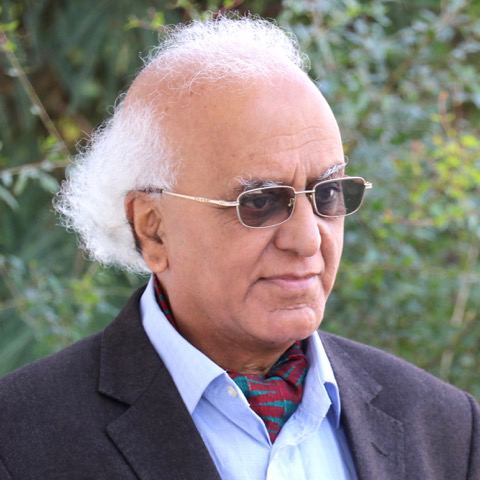Columns
Generational question
The September 8 Gen Z protest was a mix of ire and dreams.
Abhi Subedi
The September 8 Gen Z-led uprising in Kathmandu and other districts of Nepal has created conditions that could be seen as constituting the metamorphosis of this country’s history. One uprising may not be the single factor responsible for the transformation. However, using some examples of the past, we can say that such metamorphoses have already taken place in history.
Before discussing the Gen Z-led movement, I would like to cite one example from the last century—the French uprising of May 10, 1968, in Paris—which marked the end of one era and the beginning of another. That uprising also embodied the same attributes as the Gen Z protest, which had a global impact. Nepal’s Gen Z movement was spontaneous. It was guided by a historic sense of protest, spirit of rebellion and change.
The French uprising was organised by students. The single-day uprising, often referred to as the French Revolution, after the original revolution of 1789, brought significant changes and transformations in France and the world. I felt its effects as a youth in Kathmandu. The demonstrators were students from the younger generation and some from the older generation. Not only did they have different demands from the state, but they also expressed the purpose of the uprising in different idioms.
However, the primary objective was the same: To change the society and the French bureaucratic and obscurantist character. Regarding this uprising, James Miller, in his book The Passion of Michel Foucault, about the French Philosopher, states, “It made little sense tactically. It made perfect sense symbolically. For a barricade, in the mind of every educated French citizen, was the mythic emblem of revolt, a living image of the revolutionary tradition begun in 1789 and renewed in ‘four different years of the nineteenth and twentieth centuries’—and now… in May 1968.”
The Gen Z protest across Nepal, with Kathmandu—the capital—as the centre on September 8, 2025, evokes similar sentiments. The protest was a mix of ire and dreams. Such a combination is a feature of spontaneous rebellions and demonstrations we are all familiar with.
The last Nepali political revolution did share some of these qualities. We should view the Gen Z protest in a historical context because its legacy is set to leave a mark on Nepal’s history. The rebellious youths and people swiftly changed the pattern of the power structure, leading to the ouster of the prime minister.
The political change of 1990 had compelled King Birendra to give up the power centred on the Shah Kings. Following the movement, a multiparty democratic system was established. Later, the April 2006 People’s Movement compelled Birendra’s heir, his younger brother King Gyanendra, to step down from power. Ultimately, Nepal became a constitutionally Federal Democratic Republic on December 28, 2007. Modern scholars, including Lok Raj Baral, Krishna Hachhethu and others in the Indic region and the West, say that the very concept of a sovereign and centralised state has become an anachronism.
After Nepal’s vital transition, it was necessary to regulate the power structure in a careful, transparent and proper manner. For this, the country needed a crop of foresighted political leaders. The new system worked within a framework constituted by political parties. Their leaders generated a pattern of working with the multiparty system in the country, remaining committed to a new democratic culture and work ethic.
Many youths who demonstrated on September 8 were in school or college uniforms. Spontaneous, angry and bright, they were the metaphors of protests that galvanised the spirit of the rebellion. The most striking part was that they were symbolically significant. Their protest was part of a global movement of youths. When the corrupt, arrogant, short-sighted government shut down social media, it targeted the new culture, interests and sentiments of the youths who used them for various purposes. Everyone woke up to find that the government had banned major social media apps and messaging services. The government arbitrarily fixed a time for social media to surrender. Twenty-six social media firms, including Facebook, YouTube, Instagram, WhatsApp, Snapchat, Pinterest, and X, were given seven days to register under the new provisions.
The government’s move was short-sighted and guided by its autocratic mindset. They feared that the users would speak against them by creating fake IDs. Such use would spread hate elocutions, malicious and false news, and eventually lead to the commission of crimes. Such suspicion had no foundation.
The ban on platforms used by the social media-savvy generation startled them. Their response generated protest and rebellion against what the Gen Z generation called corrupt and wealth-amassing people. Violence erupted after the protests rose like a storm; on September 8 alone, reportedly, 19 people were killed. Then the government immediately rolled back the media ban.
The social media ban alone was not the cause of the anger and frustration. Corruption, favouritism and impunity also triggered it. The killing of the youths on September 8 provoked angry responses. There is no need to reiterate the order of events that followed. More than 50 people have lost their lives.
In the aftermath of the protest, Gen Z youths met with the army chief to form an interim government and restore order in the country. It was profoundly moving and revealing to hear about 10 prominent leaders of the Gen Z movement present their views about life, politics and generational questions at the Reporter’s Club on September 11. A leader was weeping, showing a shirt stained by his comrade’s blood. They were all in quest for the right idioms and ideas about charting a course of history in the country.
Nepal has experienced various vicissitudes of history. Now that we have an interim government led by former chief justice Sushila Karki, we are confident that this one, too, will steer the nation towards success. Kudos to all!




 10.12°C Kathmandu
10.12°C Kathmandu













%20(1).jpg&w=300&height=200)

